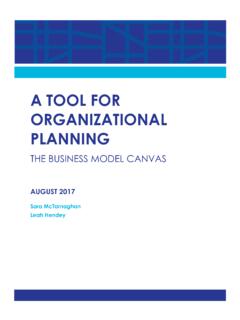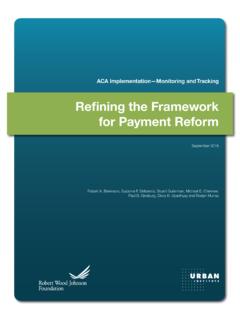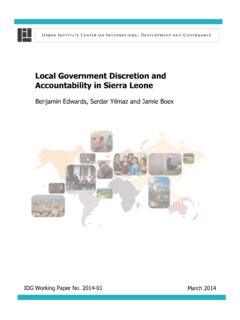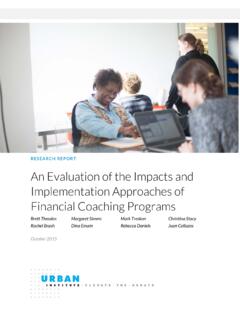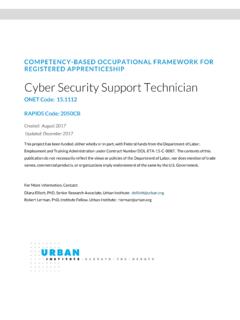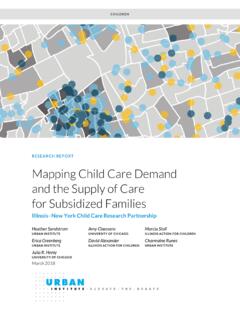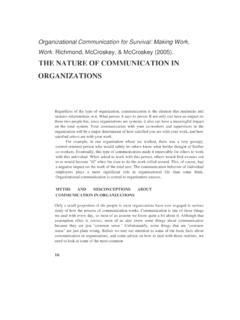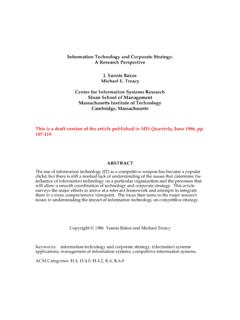Transcription of Strategies for Cultivating an Organizational …
1 Mary K. Winkler and Saunji D. Fyffe December 2016 High performance requires a significant culture shift within an organization. It is primarily about culture and people not data and technology. Sotun Krouch, Roca Inc. Increasing pressures for accountability and outcomes reporting coupled with increasing competition drive nonprofit organizations to implement continuous improvement Strategies to meet internal and external needs. Learning is a key factor in the push for continuous quality improvement,1 and nonprofits need data to make decisions, change their operations, and inform planning and program management activities.
2 Nonprofit organizations accustomed to using data for accountability and reporting must think and manage differently to cultivate an Organizational culture that values inquiry. Building and sustaining a learning culture, though beneficial, is seldom easy to achieve. This brief seeks to help nonprofit practitioners define a learning culture and the Strategies needed to cultivate it. METROPOLITAN HOUSING AND COMMUNITIES POLICY CENTER Strategies for Cultivating an Organizational Learning Culture Sponsored by the world bank Group Community Outreach Program BOX 1 Measure4 Change Measure4 Change is a program of the world bank Group and the Urban Institute to build performance measurement capacity among local nonprofits in the Washington, DC, metropolitan area.
3 Nonprofits recognize the importance of measuring program effectiveness, but their abilities vary, and resources for improvement are scarce. Measure4 Change aims to fill this long-standing gap between what nonprofits in the DC metropolitan area want and what they a re able to do. The effort intends to deliver performance measurement training in a way that is practical and accessible for nonprofits and over an extended period of time to help it take hold. The ultimate goal of this effort is to help the DC region s nonprofits better understand how they are helping their constituencies and how they can do better.
4 Measure4 Change, sponsored by the world bank Group, has three components: grant support and one-on-one technical assistance for grantees, a regional community of practice, and knowledge briefs. What Is Organizational Culture? Organizational culture refers to how things are done at an organization, as well as prevailing attitudes, patterns of accepted and expected behavior, and the habits that become part of the organization s principles and philosophy (Drennan 1992; Khademian 2002; Schein 2010). It is the connective tissue that binds together the organization, including shared values and practices, behavior norms, and most important, the organization s orientation toward performance (Morino 2011).
5 An organization s culture often explains why certain systems, practices, and behaviors do or do not occur (Trice and Beyer 1993). S ome Organizational cultures are structured and controlled, governing employee behavior through rules and standard operating procedures. Other cultures are characterized by creativity and individuality, encouraging high levels of risk taking. Organizations should consider culture when managing change or implementing new processes or practices. Organizational culture is multidimensional and can have subcultures beneath the dominant culture. For example, the accounting department may have a culture that is distinct from the culture in the marketing group.
6 Further, an organization s subcultures may vary by group. For instance, the culture across younger employees may differ from the culture shared among more seasoned staff with longer tenure. Nonprofit organizations exhibit characteristics reflecting a mix of different cultures. Organizational cultures also promote or inhibit certain behaviors and can channel behavior toward desired Organizational practices and processes. A nonprofit with a family-like culture may stress the importance of adhering to the organization s traditions and norms and emphasize group activities and staff doing things together.
7 In contrast, a nonprofit with an entrepreneurial culture may be more likely to promote individuality and place a high regard on individual accomplishments. Culture reflects what an organization considers important and can help explain the attitudes and approaches that typify the way staff carry out their tasks. 2 Strategies FOR Cultivating AN Organizational LEARNING CULTURE Despite attempts to define and characterize Organizational culture, nailing down what this looks like for nonprofits in performance management and evaluation, or what needs changing, remains elusive for many. As part of the Measure4 Change initiative, defining and Cultivating a learning culture is top of mind for grantees and participants in the community of practice, based on polls to identify topics for large group meetings and as expressed in grantee applications.
8 Even as nonprofits become more adept at defining barriers and challenges, they struggle to identify and implement Strategies for changing behavioral norms about the role and purpose of data and decisionmaking. Research shows that an Organizational culture that values learning can be a key facilitator of data use for continuous quality improvement (Derrick-Mills et al. 2014). Organizations that foster a learning culture have staff who are interested in learning and apply what they have learned to improve their Organizational , program, or individual performance. However, traditional compliance and accountability demands influence a nonprofit s Organizational culture and how it functions.
9 Nonprofits have adapted their internal environments in response to external pressures. Nonprofits with a compliance culture direct their attention and resources to ensuring compliance and tend to minimize using data to reflect and learn what the data mean and make informed decisions about program and operational improvements. A learning culture moves beyond compliance by encouraging nonprofits to develop self-correcting mechanisms and internal practices that use data to examine failures and weaknesses to make programmatic and operational changes. Further, a learning culture minimizes barriers to data and knowledge and rewards and encourages data-driven practices, making learning and continuous improvement the rule, not the exception.
10 Figure 1 captures distinctions between the two environments. Strategies FOR Cultivating AN Organizational LEARNING CULTURE 3 FIGURE 1 Cultivating a Learning Culture What Does a Learning Culture Look Like? In my experience, people who improve, innovate, and adapt are curious souls and self-learners. An organization s culture should encourage people to ask questions, seek advice, do research, improve what they do and how they do it, help each other, push each other s thinking, probe, nudge, adapt, look at things from different vantage points. All of these behaviors lead to improvement and motivation for the organization and the individuals who are part of it.
